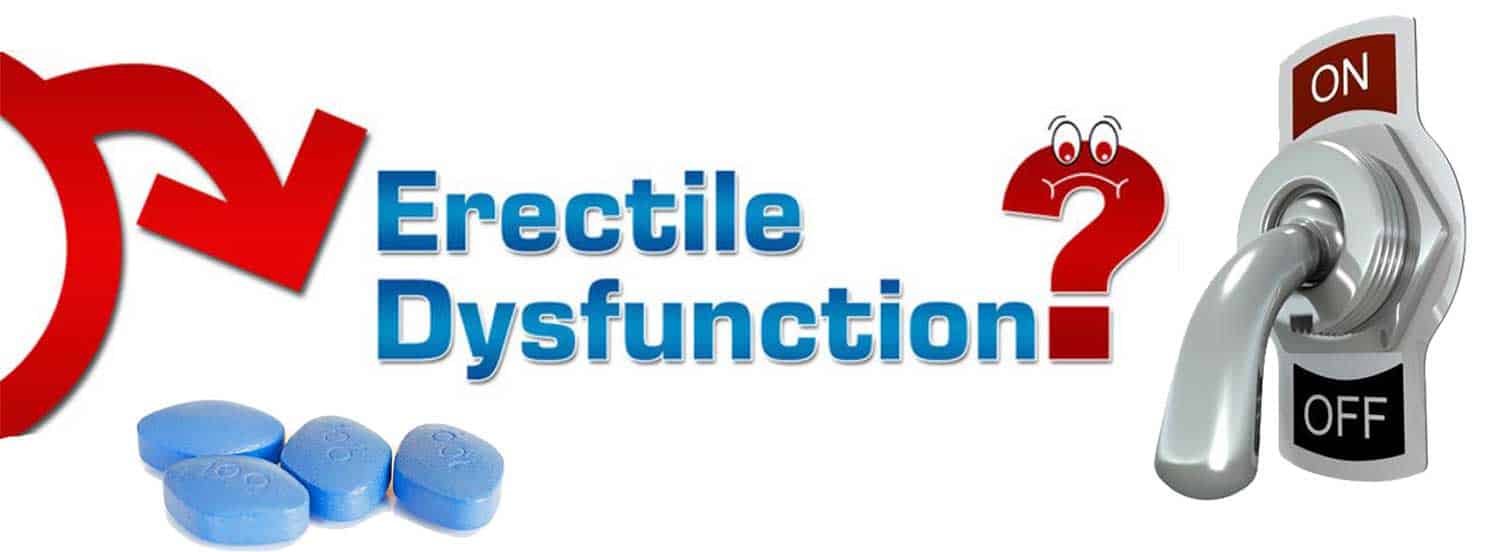ERECTILE DYSFUNCTION – IMPOTENCE

Erectile dysfunction(ED) affects a growing number of men with significant impacts on sexual function and overall quality of life. 44 % of men 60–69 years old and up to 70 % of men ≥70 years old endorse erectile difficulties. In men, sexual function declines over time, beginning during the fifth decade and affecting all domains of sexual health including desire, arousal, erectile function, and ejaculation/orgasm. ED negatively affects the relationships; emotional and psychological well-being and partner relationships.
Erection is a complex process involving hormonal, vascular, and neural systems, with significant psychological inputs as well. Normal male sexual function progresses through four stages: (1) desire, (2) erection, (3) ejaculation, and (4) detumescence. Both the erect and flaccid penile states progress through initiation and maintenance phases. The pathways and hormones involved in erection are important for both penile erection and flaccidity. Risk factors for ED are numerous. Patients over 40 years old demonstrate a significant
association between ED and cardiovascular risk factors including hypertension, dyslipidemia, Diabetes mellitus, Coronary Artery Disease and the metabolic syndrome. Other risk factors for ED include obesity and sedentary lifestyle.
The initial assessment of any sexual problem requires a detailed history and physical examination which comprises evaluation of the genitalia for lesions, scars, plaques, and meatal position as well as evaluation of the testicles for size and consistency. A detailed sexual history aimed at determining the severity, onset, and duration of the ED should also be performed.
The Sexual Health Inventory for Men (SHIM) is one of the most commonly used
validated instruments for evaluation of ED severity, comprised of five questions based on a five-point scale : no ED (SHIM score 22–25), mild (17–21), mild to moderate (12–16),moderate (8–11), and severe (1–7).
Recommended laboratory tests for ED include fasting blood glucose, lipid panel, and gender-specific hormones. Penile duplex ultrasonography which evaluates blood flow direction and velocity, is the most common and informative method of assessing for both arterial insufficiency and venoocclusive dysfunction. The differentiation between psychogenic and organic ED can be made using nocturnal penile tumescence (Rigiscan). These tests are not done routinely.
The treatment of ED comprises psychosexual therapy, lifestyle modifications, and medical and surgical management. Recommended lifestyle alterations include regular exercise, smoking cessation, dietary intervention with emphasis on the Mediterranean diet and moderate alcohol consumption. Start testosterone replacement in hypogonadal men. Phosphodiesterase 5 inhibitors are first-line medical therapy for ED and encompass numerous drugs like sildenafil, vardenafil, and tadalafil etc. Transurethral alprostadil (prostaglandin E1) marketed as Medicated Urethral System for Erection (MUSE) in combination with sildenafil
can be used with limited efficacy in non responders. Intracavernosal injection therapies constitute a second-line ED treatment and are often used when oral therapies fail.
Several medications are currently in use and include various combinations of Prostaglandin E1,phentolamine, papaverine, and vasoactive intestinal Peptide . Vaccum Erection devices can be applied in nearly all etiologies of ED but have low overall acceptance and high long-term discontinuation rates due to the unnatural feeling of the erection and the mechanical procedure required to produce it. Insertion of a penile prosthesis is considered as third-line therapy for ED, used after patients fail medical therapies
Penile revascularization (anastomosis of the inferior epigastric artery to the dorsal penile arteries and/or the deep dorsal vein) can be offered to nonsmoking,
non diabetic men
Given the rise in conditions predisposing to ED as well as an aging male population, addressing ED risk factors through lifestyle modification, in conjunction with medical and surgical therapy in appropriate patients, will mitigate the physical and psychological impact of ED. Continued research into the molecular mechanisms of ED and development of improved medications to address ED and its risk factors will further expand the significant
armamentarium of treatments currently available, improving not only the quality of life of affected men but also their life span.